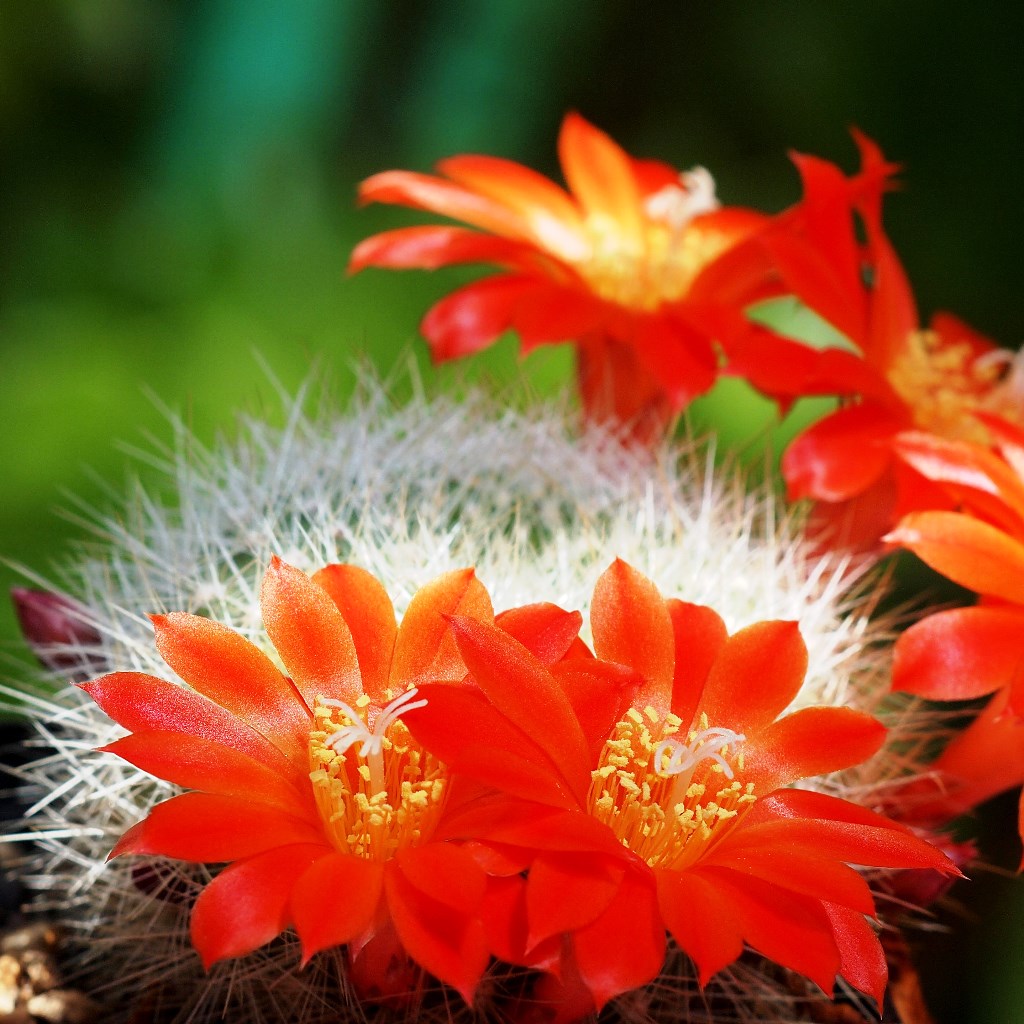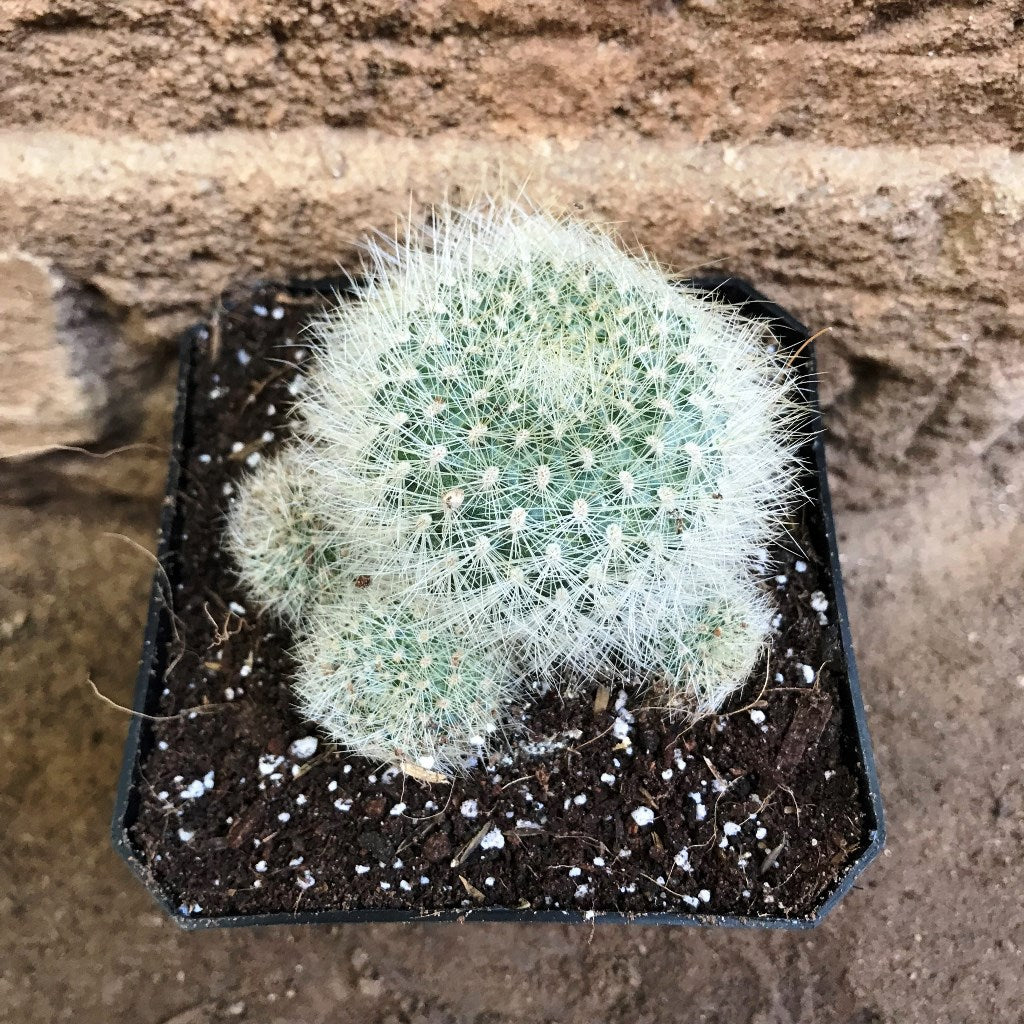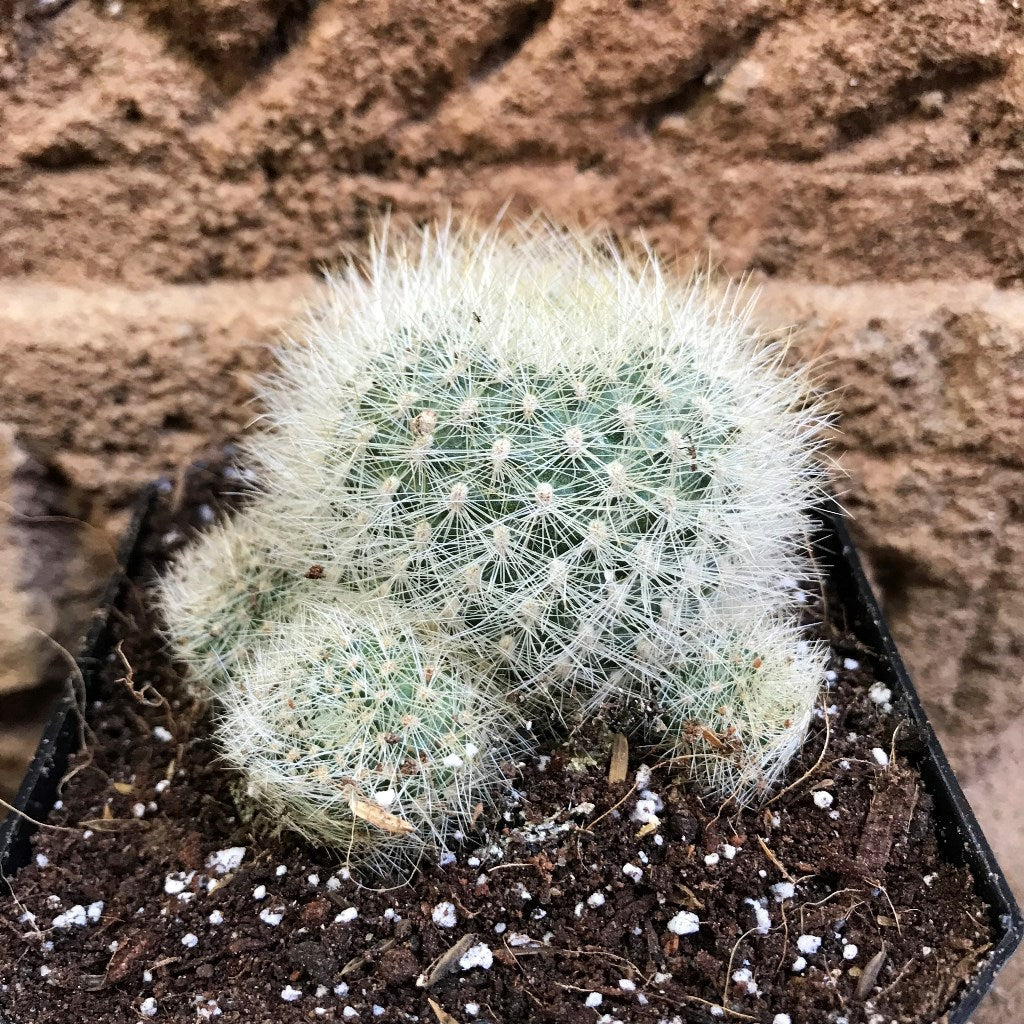Rebutia senilis
Family
Cactaceae
Native
Bolivia & Argentina
Description
Rebutia senilis v. stuemeri is a popular form of the very variable Rebutia minuscula distinguished by longer, bristly, glassy, white spines and very showy, large flowers, usually orange or crimson. It is a small solitary or mound-forming cactus. It grows quite close to the ground and offsets only with age. It would appear that in cultivation they grow larger and cluster more vigorously than in habitat. It is a prolific bloomer.
Stem are globular, depressed, bright green, about 7 cm. high and the same across, with spirally arranged tubercles and densely covered by spines Flowers are diurnal, long-lasting (about ten days), orange to orange-red, funnel-shaped, up to 2 inches long, up to 1.6 inches in diameter. Fruits are small, globose, and purple.
Environment
Rebutias thrive in bright light and a range of conditions. Many species can be grown in partial shade to full sun. However, as these are mountain species, they do not appreciate high temperatures, which should be avoided.
It requires rich, fast draining porous cactus soil. Repotting may be done every 2-3 years. Ideally use 50% Potting Soil + 15% cocopeat + 25% Organic manure / Vermicompost + 5% charcoal chips + 5% perlite.
Water the soil abundantly when it is dry to the touch. Allow soil to drain thoroughly before watering again. Allow the soil mix to become nearly dry between waterings, but then water thoroughly. Suspend watering in the winter, but mist occasionally.
During the growing season, fertilize with a cacti fertilizer mix.
























